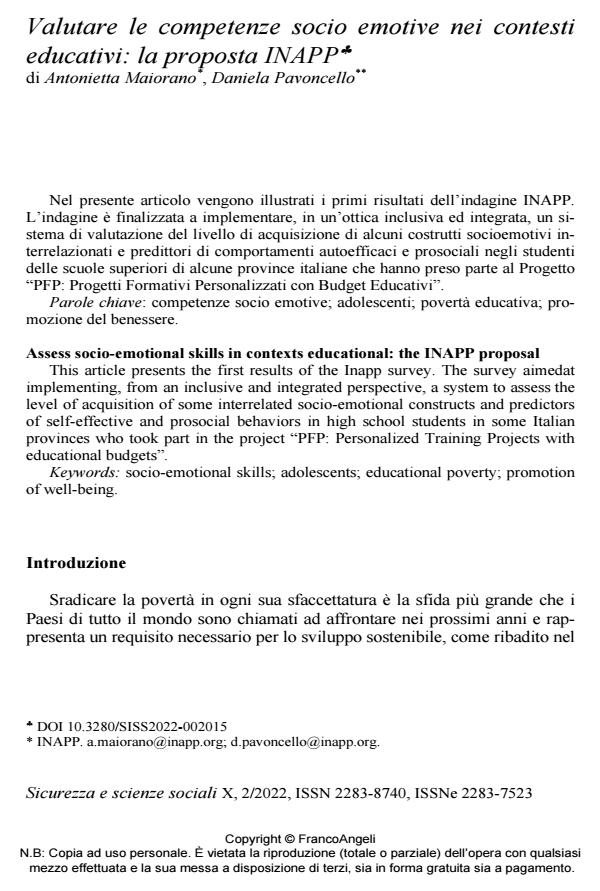Assess socio-emotional skills in contexts educational: the INAPP proposal
Journal title SICUREZZA E SCIENZE SOCIALI
Author/s Antonietta Maiorano, Daniela Pavoncello
Publishing Year 2022 Issue 2022/2
Language Italian Pages 20 P. 224-243 File size 316 KB
DOI 10.3280/SISS2022-002015
DOI is like a bar code for intellectual property: to have more infomation
click here
Below, you can see the article first page
If you want to buy this article in PDF format, you can do it, following the instructions to buy download credits

FrancoAngeli is member of Publishers International Linking Association, Inc (PILA), a not-for-profit association which run the CrossRef service enabling links to and from online scholarly content.
This article presents the first results of the Inapp survey. The survey aimedat implementing, from an inclusive and integrated perspective, a system to assess the level of acquisition of some interrelated socio-emotional constructs and predictors of self-effective and prosocial behaviors in high school students in some Italian provinces who took part in the project "PFP: Personalized Training Projects with educational budgets£.
Keywords: socio-emotional skills; adolescents; educational poverty; promotion of well-being.
Antonietta Maiorano, Daniela Pavoncello, Valutare le competenze socio emotive nei contesti educativi: la proposta INAPP in "SICUREZZA E SCIENZE SOCIALI" 2/2022, pp 224-243, DOI: 10.3280/SISS2022-002015